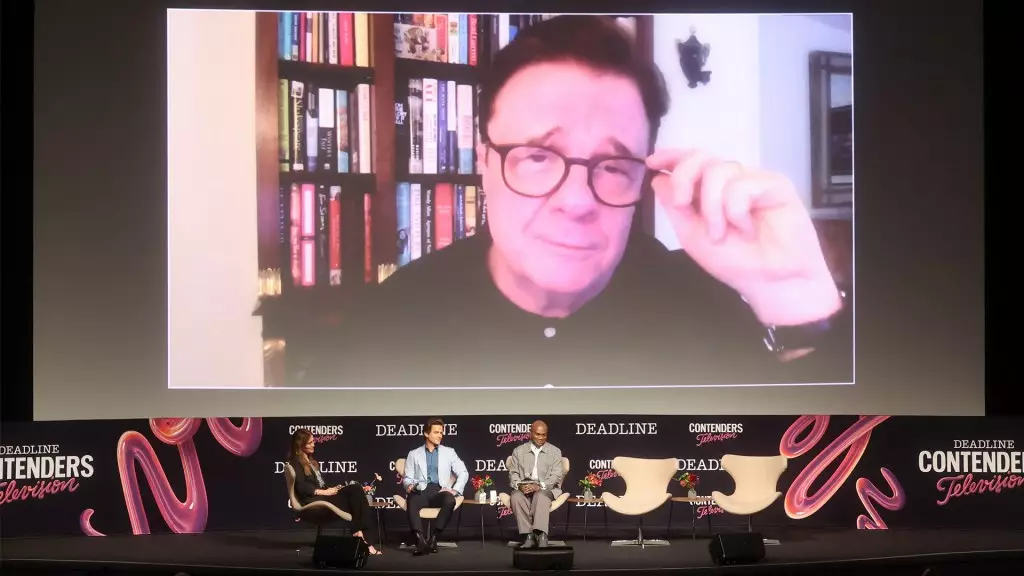In recent years, the cultural landscape has shifted dramatically, particularly regarding LGBTQ+ representation in mainstream media. Shows like “Mid-Century Modern” exemplify how critical it is to have diverse narratives in a society often hostile to different sexual orientations. The show’s ensemble, comprising Nathan Lane, Matt Bomer, and Nathan Lee Graham, articulates a collective intention not merely to entertain but to provide a necessary counter-narrative amidst a troubling political atmosphere where LGBTQ+ rights appear under siege.
Lane poignantly notes the necessity of presenting queer joy in times of adversity. His comment about living under an “authoritarian regime” underscores a profound concern for the current climate, hinting at broader societal issues without naming specific entities. This intentionality adds depth to the humor, making “Mid-Century Modern” a vital cultural artifact that not only reflects gay experiences but also provides solace and laughter in a tumultuous world.
A Narrative of Healing and Found Family
At the center of “Mid-Century Modern” is a poignant story of friendship and resilience. Following the loss of a close friend, three older men—each a unique blend of personality and background—converge in Palm Springs, showcasing the beauty of camaraderie. Lane’s character, Bunny, a bra store mogul, Jerry (Bomer), embodying a cheerful optimism, and the curmudgeonly Arthur (Graham) collectively form a “found family.” This setup not only allows for humor but also opens avenues for addressing significant life lessons.
The characters navigate their experiences with a blend of wit and sensitivity, symbolizing a larger community grappling with loss, acceptance, and love. In portraying their vulnerabilities, the series becomes a mirror that reflects the multifaceted nature of LGBTQ+ lives. These relationships resonate with audiences, advocating for empathy in a globally divisive moment.
Behind the Laughter: A Tribute to Legacy
An incredibly poignant aspect of “Mid-Century Modern” stems from the legacy of Linda Lavin, who plays Bunny’s mother, Sybil. The tragic timing of her passing creates an added layer of emotional weight to the series. The creators faced the challenging task of honoring her memory while delivering relatable humor and heartfelt moments, leading to an episode that serves as a tribute to her indelible impact on the show and her co-stars.
Lane’s recollections of Lavin reflect a rich history in the theater, emphasizing how life’s shared experiences create a tapestry of collective resilience. Bomer’s acknowledgment of her “gentle and beautiful grace” reinforces the uplifting spirit that the show aims to champion. In doing so, “Mid-Century Modern” becomes not just a sitcom but a canvas that celebrates love, loss, and the enduring bonds of friendship.
The Joy of Authenticity and Audience Engagement
In an age when many shows opt for synthetic laughter through laugh tracks, “Mid-Century Modern” boasts a genuine studio audience, ensuring that the laughter heard is authentic and spontaneous. This choice infuses the show with palpable energy, allowing it to connect more deeply with viewers. Graham’s gentle rebuttal to the critics indicates a commitment to the show’s integrity and the shared experience it seeks to create.
Engaging the audience in this way is crucial for building a community around the themes of the show. It emphasizes that humor, especially within LGBTQ+ narratives, should be heartfelt and relatable, fostering a connection that transcends the screen. Authentic laughter contributes to the series’ charm, enhancing its goal of bringing queer joy to light at a time when it’s desperately needed.
In essence, “Mid-Century Modern” goes beyond mere entertainment; it offers a sanctuary for viewers to embrace their identities while advocating for a world where diversity is celebrated. The combination of heartfelt storytelling, authentic representation, and a focus on community strengthens its message as a beacon of resilience and joy within an often-chaotic landscape.


Leave a Reply